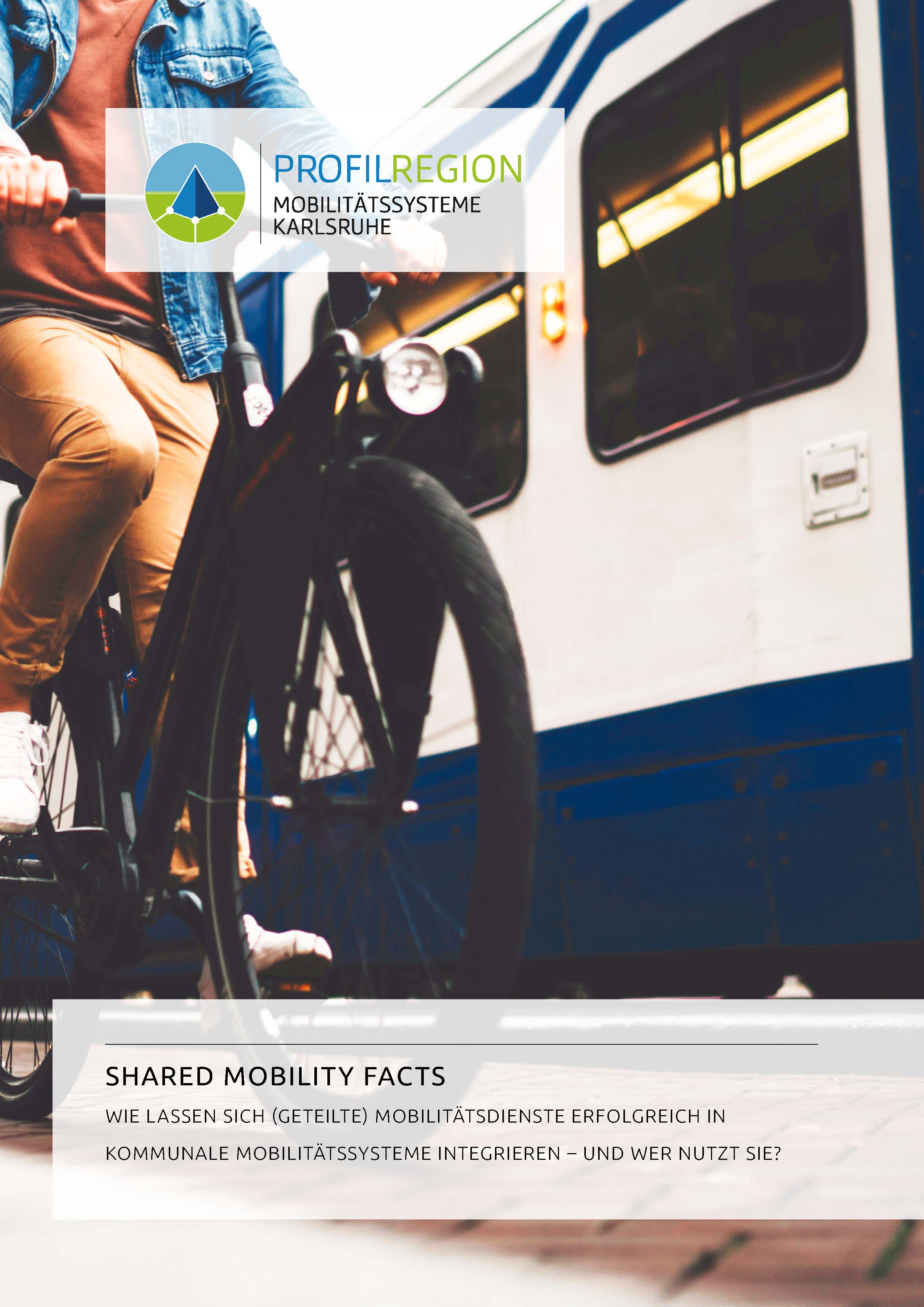Shared mobility can improve the quality of life
Many people have been working from home for about a year now due to the Covid-19 pandemic. The resulting decline in traffic offers the opportunity to redistribute the areas involved and to integrate shared forms of mobility alongside private and local public transport. Fraunhofer ISI has published a guide to support municipalities in this undertaking.

In its recent publication “Shared Mobility Facts”, the Fraunhofer Institute for Systems and Innovation Research ISI gives recommendations on how to integrate shared mobility services into urban transport. These services include sharing schemes for cars, bikes and e-scooters as well as ride-pooling, which brings individuals making similar trips together in one vehicle.
At Fraunhofer ISI, Konstantin Krauß coordinated the preparation of current research results for municipalities, and stresses the high degree of flexibility these forms of mobility provide. “A bike-sharing fleet, for example, can be moved relatively easily, in order to ease the pressure on public transport services after large events or during exceptional situations, such as the current pandemic, for example. On the demand-side, these services enable users to obtain the vehicle that suits their purpose at that moment via an app - from e-scooters for short visits to friends up to small vans for moving house”.
The guide, which was produced within the framework of the “Profilregion: High Performance Center for Mobility Research”, and which summarizes many of the findings from this network, addresses both the challenges municipalities face and possible solutions.
Attractive cities need integrated mobility systems
Climate and environmental protection is one of the biggest challenges for cities. How they deal with motorized private transport is crucial for meeting the reduction targets set for greenhouse gas emissions, for example, and for complying with the limits on pollutants and noise. Capacity and area design factors also play a role here: Infrastructures are often designed for peak rush hour traffic and are not used to capacity at other times. Since so much space is required for parking, areas are lost that could be designed for other purposes, but these are important for the quality of life and the attractiveness of cities. If, for example, comprehensive car-sharing schemes reduced the number of privately owned cars, streets and parking lots would be freed up for other modes of transport like bicycles – or even for different uses, for example as green spaces.
Local public transport is in a difficult financial situation – not just since the pandemic – but the decline in the number of users caused by Covid-19 has made this situation even worse. Shared services can make local public transport more attractive – especially in suburban or rural areas and in city districts outside the main public transport routes. In particular, small vehicles like e-scooters and bikes can help to bridge the first and last kilometers and significantly reduce the time needed to get to and from public transport stops.
If such shared mobility services are developed and offered in cooperation with local public transport services, this can resolve the frequently mentioned conflict between promoting innovation and protecting traditional public transport. Dr. Claus Doll, who coordinates the cross-cutting research field “Transport and Society” within the Profilregion, adds “Dovetailing local public transport and shared mobility services can also ease the financial burden on municipalities if, for example, on-demand ride-pooling supplements the usually unprofitable off-peak times of public transport”.
Goal-oriented planning and regulation in advance
The guide's authors emphasize that goal-oriented planning and regulation are needed to integrate shared mobility services, as simply permitting shared mobility schemes without a goal and through monitoring can lead to an increase in passenger and vehicle kilometers and thus higher CO2 emissions. To avoid this happening, municipalities must first precisely define their own objectives when implementing new mobility concepts: where and when should the mobility scheme provide which services, which users should it reach, what emissions are permitted, what are the preferred modes of transport, what access times are acceptable?
As the different modes of transport have specific effects on user experience, public transport and sustainability, alternative selections and combinations of services can result depending on the local objectives. The important thing is to consider the interfaces in the concepts and design them together, for instance, through smart digitalization on a shared platform. This can help to align future mobility services to user needs – which is essential for a successful transformation of mobility.
Further information
The Fraunhofer Institute for Systems and Innovation Research ISI analyzes the origins and impacts of innovations. We research the short- and long-term developments of innovation processes and the impacts of new technologies and services on society. On this basis, we are able to provide our clients from industry, politics and science with recommendations for action and perspectives for key decisions. Our expertise is founded on our scientific competence as well as an interdisciplinary and systemic research approach.